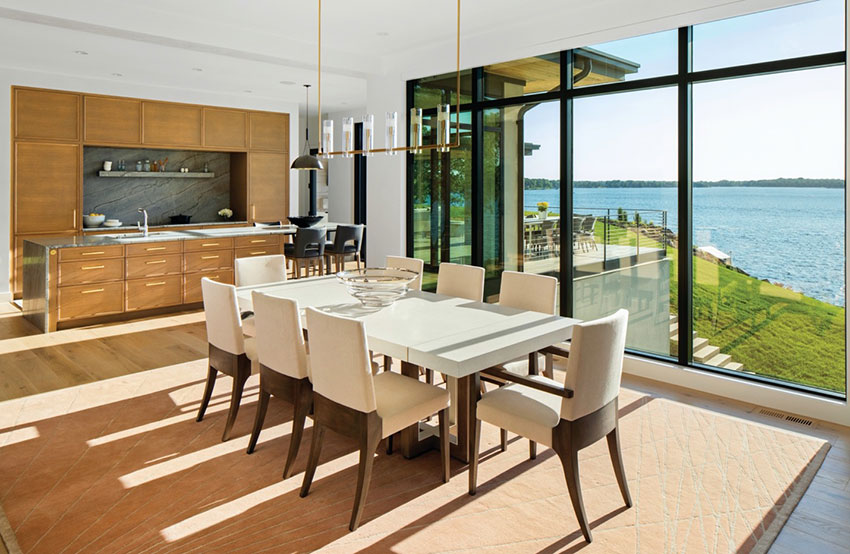Adaptability Creates Opportunity
The Personalized Home
Smart technology continues to expand its role in enhancing the home experience. As homes are required to do more, their traditional tasks–as a place to retreat and rest–are increasingly impinged upon.
Sleep is a huge factor in living better. The ability to regulate light at home has a dramatic impact on circadian rhythm. Including skylights in a home’s design allows homeowners to capture more natural light during the day. Pioneering skylights are coupling the desire for increased natural lighting with smart technology to provide tunable LED lighting. This smart skylight window offers built in, tunable lighting that mimics the ideal color temperature of natural light to provide the right light at the right time. The lighting can be customized to aid homeowners in their waking up or winding down cycles. Lighting, venting, and shades can be operated from a wall switch, app, or smart home systems.
Imagine a home that’s flooded with natural light, a home that offers a wealth of immersive and calming views, one that helps its occupants receive the right light at the right time. Envision a home that prioritizes the kind of spaces where people can rest, recharge, or gather with loved ones, a home that encourages occupants to breathe easy. Exploring the possibilities of what a home can be, when its design is inspired by well-being, is the fuel behind post-pandemic design trends.
“The pandemic has transformed our relationship and understanding of the opportunities available to reshape our homes to enhance our everyday quality of life,” says Karen S. Planet, AIA, NCARB, LEED AP BD+C, of RWA Architects, Inc. “One of the most prevalent trends is the desire to blur the boundary between the interior and exterior spaces in our homes. Larger groupings of operable windows and doors are being incorporated into new and existing homes to provide seamless connections to the natural exterior environment. These openings improve the daylight in the rooms, provide fresh air, and extend the natural environment deep into the interior spaces. These trends have greatly increased the demand for multi-sliding and bi-folding doors."
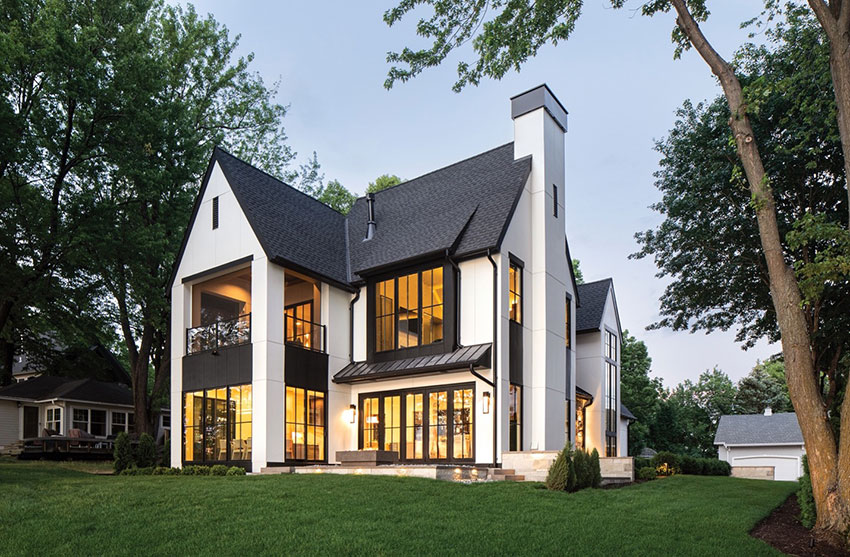
Photo courtesy of Marvin
Homes are harder working than ever. Post-pandemic, they have transformed into schools, workplaces, gyms, gathering places, and peaceful retreats–sometimes hosting all of these functions simultaneously.
ENHANCING PERFORMANCE
Joining with the emphasis on wellness, light, and a better connection to nature is the amplified focus on energy efficiency and performance. No longer just a buzz word, the performance of products is increasingly important to homeowners. A 2022 consumer survey showed that 70% of respondents think it’s important to live in a home with energy-efficient features, meaning that these features are no longer just “nice to have,” they’re a priority for today’s homebuyers.6 A survey from the National Association of Realtors (NAR) revealed that 63 percent of agents and brokers find it valuable to promote energy efficiency in a house listing. Real estate agents report that energy efficiency added $8,246 to a home’s value in 2022, up more than $1600 from 2021.7
Fortifying the home at its exterior door is a necessary step towards that goal. State-of-the-art technology has allowed entry doors to join the list of products that not only bring good looks to the table, but also efficiency. Fiberglass doors utilizing a foam core result in strong and sturdy doors that mimic the look and feel of real wood. The fiberglass reinforced skins provide exceptional durability and resistance to humidity, unlike steel doors, which can delaminate. Wood and steel doors have been a traditional choice in the construction industry, but both come with problems such as rotting, rusting, and weather damage. Fiberglass is not susceptible to weather damage, requires less maintenance, and offers higher performance ratings.
Fiberglass does not conduct heat well, so an entry door made with the material will help keep outside elements from impacting the conditioned interior. There are numerous fiberglass styles to choose from, including woodgrain, mahogany, smooth skin, and fir grain.
Unique frame assembly using composite polyfiber (PF) prevents water from infiltrating the door from all angles. The use of completely composite stiles prevents issues such as rotting, warping, and rusting. Leading fiberglass doors feature a full-length laminated veneer lumber (LVL) block that provides stronger rigidity and complements a range of door locks and hardware to be installed for increased security. Fiberglass doors offer a green alternative as they are durable, have a longer lifespan, are energy efficient, and environmentally friendly. Fiberglass doors are available with 10-year, 25-year, and lifetime warranties. Maintenance and durability benefits of a fiberglass front door are enhanced by correctly installing the door, utilizing weather resistant caulk, and applying weather stripping where necessary.
When combined with a proprietary foam core, fiberglass doors are among the most energy-efficient building products available due to the insulation provided by high density polyurethane foam. This insulation helps to reduce energy consumption and building operation costs by sealing out the elements. As a result, these doors are ENERGY STAR Qualified and provide homeowners with cost savings on electricity bills, increased comfort, and environmental protection.
The National Fenestration Rating Council (NFRC) maintains a database of window and door performance. A door’s energy efficiency can be measured by three different factors. First, a Solar Heat Gain Coefficient (SHGC) is the fraction of solar radiation admitted through a window, door, or skylight, either transmitted directly and/or absorbed, and subsequently released as heat inside a home. The lower the SHGC, the less solar heat it transmits and the greater its shading ability. The desirable coefficient depends on where the project is located. In warmer climates, a lower solar heat gain coefficient will help keep the indoors cool, but in cooler climates a higher solar hear gain coefficient can help to keep the home warm through natural insolation. This rating comes in a range of 0-1.
U-factor is the rate at which a window, door, or skylight transmits non-solar heat flow. For windows, skylights, and glass doors, a U-factor may refer to just the glass or glazing alone. Lower numbers equal better performance, with the range being 0-2. Leading fiberglass entry doors with glazing are capable of achieving U-factors as low as 0.20.
Finally, R-values measure a product’s resistance to heat loss. Look for a higher R-Value for a more energy efficient product.
To get the best ratings, the design professional should consider the amount of glass the door has as well as the emissivity of the glass. The U-Factor Rating is affected by the airflow around the window and the emissivity of the glass. Glass with a low emissivity coating is a good option. Emissivity coatings reduce the amount of solar radiation that enters a building from the infrared portion of the solar (sun’s) spectrum while still allowing a high degree of light to come into the building. The coating also helps to keep heat in a building during winter heating periods.
Leading fiberglass door manufacturers are partnering with Habitat for Humanity in order to create supply high performance fiberglass doors to affordable, green houses for low-income families across the nation.
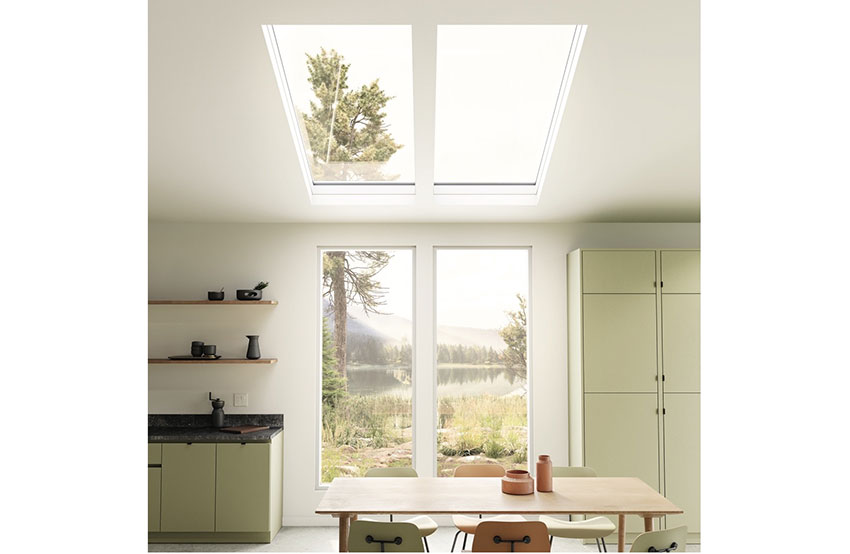
Photo courtesy of Marvin
Skylights increasingly play a part in home design. Smart skylights can help in establishing circadian rhythms indoors.
Notice
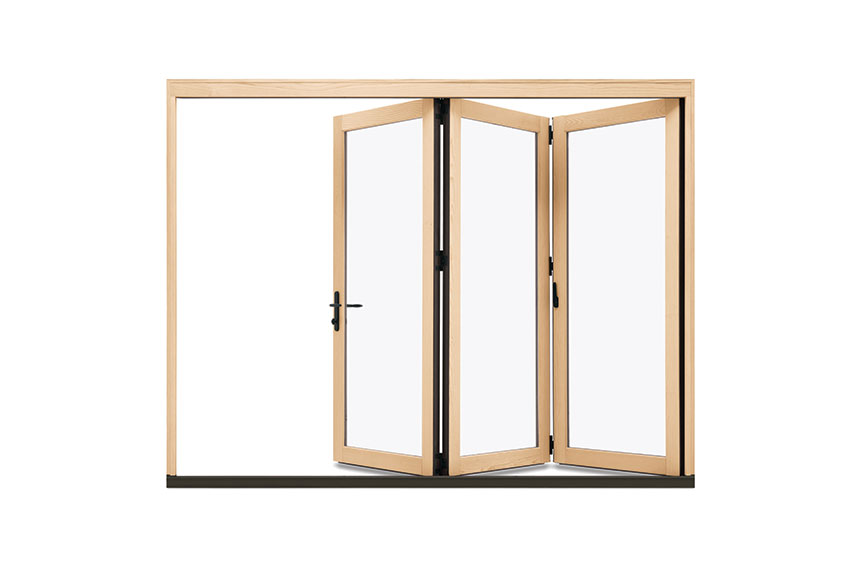
www.marvin.com
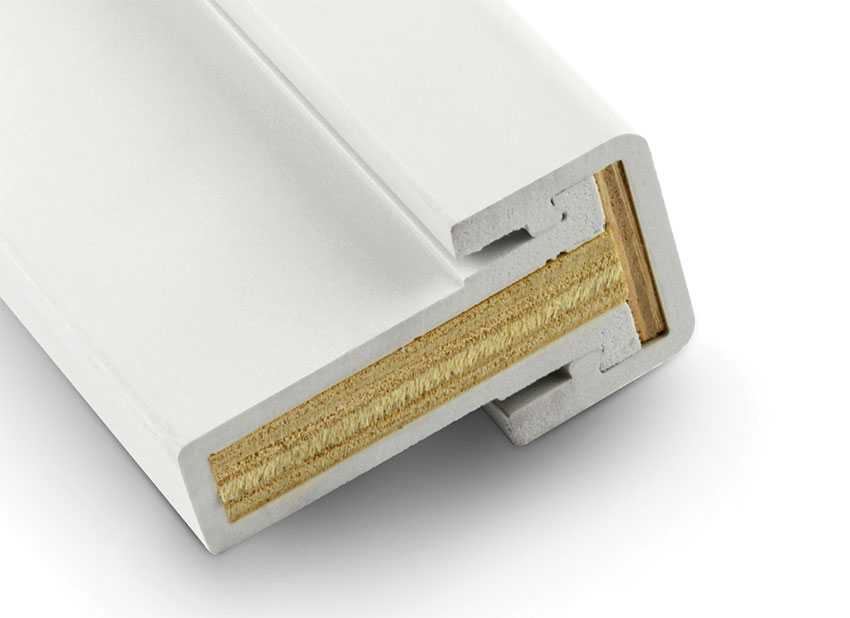
www.plastproinc.com
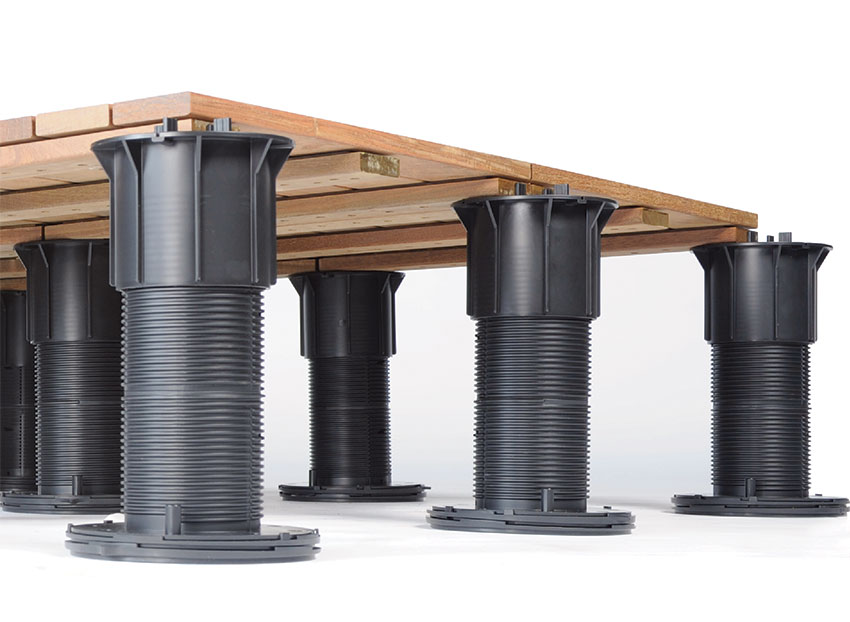
www.bisonip.com





